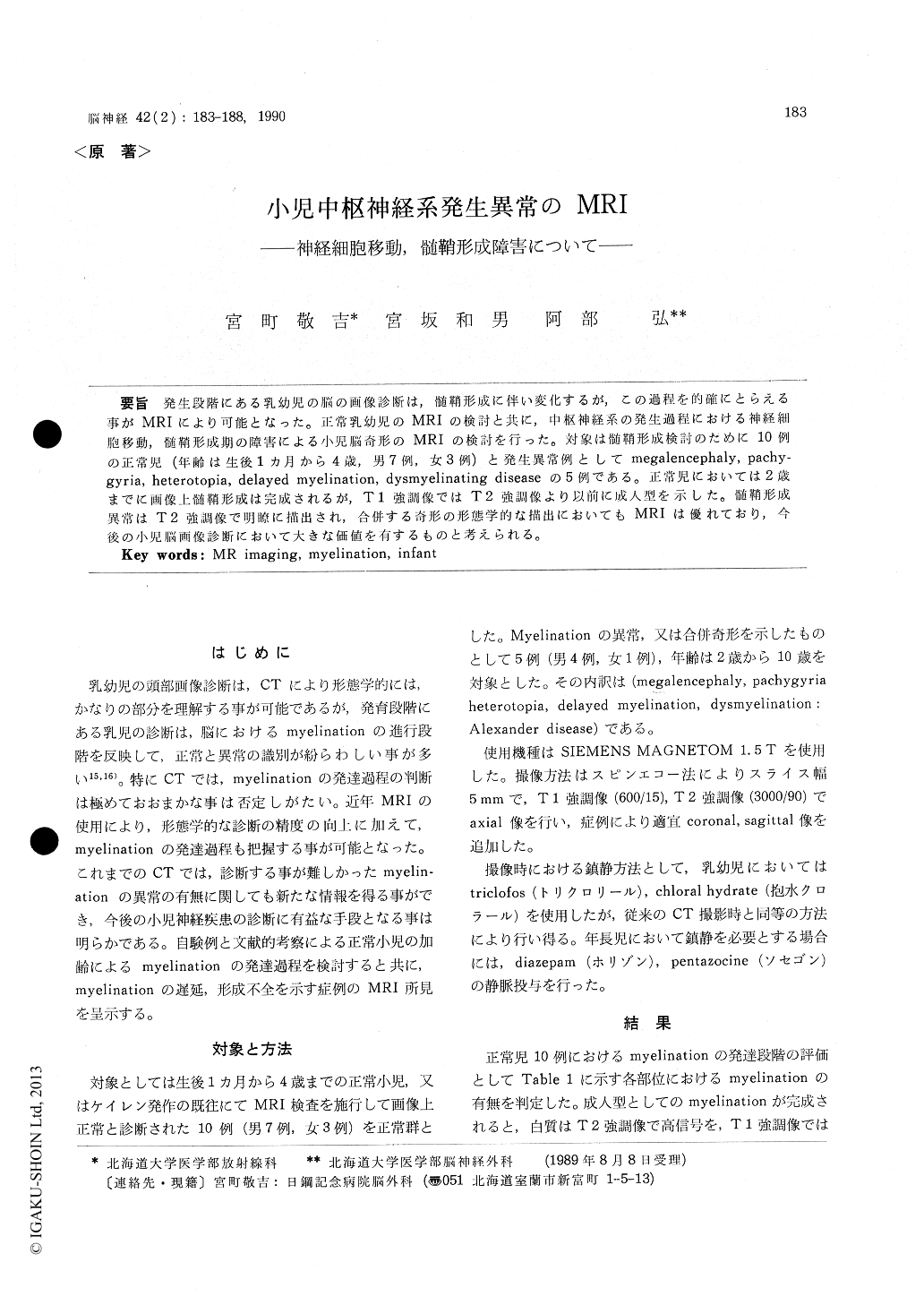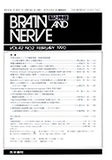Japanese
English
- 有料閲覧
- Abstract 文献概要
- 1ページ目 Look Inside
発生段階にある乳幼児の脳の画像診断は,髄鞘形成に伴い変化するが,この過程を的確にとらえる事がMRIにより可能となった。正常乳幼児のMRIの検討と共に,中枢神経系の発生過程における神経細胞移動,髄鞘形成期の障害による小児脳奇形のMRIの検討を行った。対象は髄鞘形成検討のために10例の正常児(年齢は生後1カ月から4歳,男7例,女3例)と発生異常例としてmegalencephaly, pachy—gyria, heterotopia, delayed myelination, dysmyelinating diseaseの5例である。正常児においては2歳までに画像上髄鞘形成は完成されるが,T1強調像ではT2強調像より以前に成人型を示した。髄鞘形成異常はT2強調像で明瞭に描出され,合併する奇形の形態学的な描出においてもMRIは優れており,今後の小児脳画像診断において大きな価値を有するものと考えられる。
We often experience the case that is difficult to differentiate normal from abnormal myelinating process by CT scan, because the diagnosis of myelinating maturation of the infant during de-velopmental process is confusing. We can under-stand maturation of myelination adding to the advancement of diagnostic resolution by MR im-ager. So we obtain more informations about the abnormality of myelination and development of the brain by MR imaging than CT scan.
This study demonstrates the ability of MR imaging to show progression of myelination in 10 infants and children. We also reveals the patients with disorders of neuronal migration or myelina-tion during developing process.
MR scanning could be obtained by sedation using such as triclofos or chloral hydrate for in-fant and younger children. It was necessary to use diazepam or pentazocine introvenously for elder children with mental retardation or restles-sness.
MR scans were performed with Siemens MAG-NETOM 1. 5 Tesla. T 1-weighted spin echo im-age (TR 600/TE 15) and T 2-weighted image (TR 3000/TE 90) were obtained for all cases.
The ten normal infants and children (7 boys, 3 girls) were aged from 1 month to 4 years.
Maturation of white matter generally proceeded from posterior limb of internal capsule to middle cerebellar peduncle, cerebellar white matter, corpus callosum, anterior limb of internal capsule, occipi-tal white matter, centrum semiovale, finally frontal white matter. Myelination was matured during the first two years by T 2-weighted images. Changes caused by brain myelination were seen earlier on T 1-weighted images (7 months after birth) than on T 2-weighted images (one year and 9 months after birth).
5 patients with disorders of neuronal migration or myelination include megalencephaly, pachygyria heterotopia, delayed myelination and dysmyelinat-ing disease. Lissencephaly, pachygyria, heterotopia are a rare group of congenital malformations ofthe brain that are collectively referred to as the migrational disorders. In the patient with pacyg-yria, thickened, coarse broad base gyri with an abnormally smooth gray-white matter interface were clearly seen by MR imaging.
Delayed or deficient myelination is a conse-quence of various abnormal conditions, including malnutritions, inborn errors of metabolism and congenital infections. Alexander disease is one of the categories of leukodystrophy. It revealed an impressive MR imaging. The signal intensity was inverted compared with normal brain on both T 1 weighted image and T 2 weighted image.
It is possible to differentiate white matter from gray matter by CT. But it is not always able to make a precise diagnosis in details. MR imaging was more sensitive than CT in detecting brain maturation as well as developing abnormalities including delayed myelination and dysmyelination.

Copyright © 1990, Igaku-Shoin Ltd. All rights reserved.


